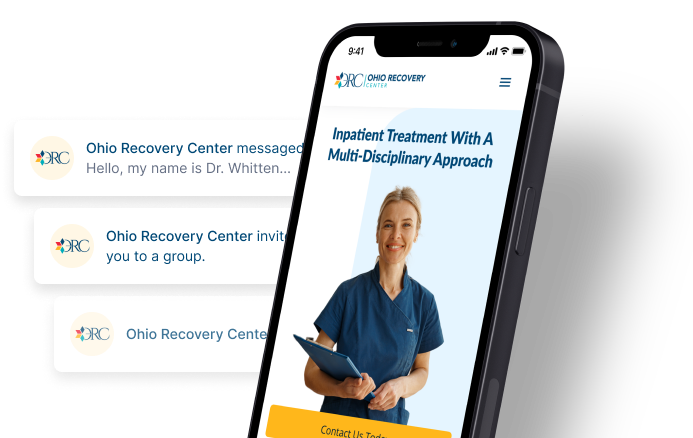The Importance Of Mental Health In The Workplace
Work related stress and untreated mental health problems have a profoundly negative impact on employee mental and physical wellness, productivity, and job retention. By addressing mental health proactively, employers can benefit their employees while also benefiting their bottom lines.

Workplace mental health is an important aspect of modern labor but is often neglected. And the costs of this neglect can be significant.
According to a recent Gallup study, in 2022 lost productivity related to poor mental health and mental illness across the entire US economy was estimated to cost $47.6 billion annually.
Another analysis from 2018 put the cost of workplace stress as high as $187 billion in lost productivity.
In contrast, employee support systems are affordable and can be effective for:
- helping employees with mental health issues be more effective and confident in their work
- supporting employee mental health overall so employees are happier, more productive, less susceptible to burnout, and more motivated to stay with an employer long-term
Mental Health In The US Workforce
18.3% of all adults in America reported experiencing some form of mental illness in 2016, preventing many adults from fully participating in the workforce. Among those who did work either full or part-time, around 1/5 (19%) would rate their mental health as only poor or fair.
Absenteeism
Workers with poor to fair mental health are much more likely to experience absenteeism, reporting as much as four times the unplanned absences of employees who report excellent, very good, or good mental health.
Women are more likely to report poor or fair mental health than men (23% vs. 15%) and younger workers under the age of 30 were more likely to report poor or fair mental health than those age 50-64 and older (31% vs. 11% vs. 9%).
Negative Effects
Around 40% of American workers also report that their job has a negative effect on their mental health, compared to only 30% who report a positive effect (47% among young workers aged 18-29).
Additionally, following the Covid-19 pandemic timeframe, the portion of workers who strongly agree that their organization cares about their wellbeing has fallen to only 24% of the US workforce.
Factors That Negatively Impact Employee Mental Health
A number of different elements in a person’s work environment can negatively impact their mental wellness over time, leading to problems with employee job performance, attendance, and retention over time.
These negative working conditions may include:
- inadequate health and safety policies
- underutilization of one’s skills or creativity
- overworking (including chronic understaffing, excessive workload, and excessive hours worked)
- poor management and communication practices
- poor, hostile, or high-pressure workplace cultures
- harassment or bullying among co-workers
- discrimination or exclusion
- no regard for employee input or decision-making
- concerns about job security, financial security, or career development
- unclear job role
- competing demands at work and in one’s personal life
Features Of Mentally Healthy Workplaces
In contrast, workplaces can cultivate positive mental well-being among employees by ensuring that each employee receives:
- pay and benefits sufficient for their current and future livelihood
- a sense of safety, respect, and belonging in the workplace
- feelings of confidence, purpose, and achievement related to their work
- an opportunity to build positive relationships and a positive workplace community
- reasonable expectations for one’s work and role
- accommodations to help maintain a healthy work-life balance
Opportunities For Mental Health Support At Work
Employers may also want to support employee wellbeing and mental health through targeted and intentional initiatives. Some specific recommendations published by the CDC and other organizations include:
- providing managers with formal training programs to help them recognize the signs and symptoms of stress, anxiety, and depression in team members and respond appropriately and proactively
- offering health insurance that covers no or low-cost treatment for depression and other common mental disorders
- providing free or subsidized counseling or lifestyle coaching sessions
- offering self-assessments or screenings for mental health to all employees
- hosting seminars on stress management techniques (mindfulness, yoga, meditation), physical health concerns (stretching, lifting), and available workplace health resources (employee assistance programs, mental health benefits, FMLA options)
- giving employees decision-making opportunities whenever it comes to changes that may impact their work environment and workplace stress
- creating dedicated quiet spaces for employees to use when needed
- establishing employee assistance programs (EAPs) to provide a discreet yet effective safety net for employees who experience critical health, financial, or social problems, including mental health conditions and/or substance use disorders
Mental Health Treatment Programs
Of course, employer wellness programs can only go so far.
If an employee begins struggling with major mental health issue like schizophrenia, borderline personality disorder, PTSD, OCD, major depression, eating disorders, suicidal ideation, anxiety disorders, or panic disorder, professional interventions are going to offer the most effective solution.
This includes inpatient stabilization and mental health services provided by Ohio Recovery Center, a residential mental health treatment in Ohio.
Our professional mental health interventions include:
- short-term stabilization
- psychotherapy (cognitive behavioral therapy, dialectical behavioral therapy, and eye movement desensitization and reprocessing)
- individual therapy, group therapy, and support group facilitation
- medication management
- psychosocial treatments (psychoeducation, self-help training, coping skills development, vocational and independent living training, family counseling, case management, and aftercare)
- alternative treatment and wellness options including exercise, nutrition, yoga, meditation, mindfulness, and more
Contact us for a consultation today.
- American Psychological Association (APA) https://www.apa.org/news/apa/2022/surgeon-general-workplace-well-being
- Centers For Disease Control and Prevention (CDC) https://www.cdc.gov/workplacehealthpromotion/tools-resources/workplace-health/mental-health/index.html
- Gallup https://www.gallup.com/workplace/404174/economic-cost-poor-employee-mental-health.aspx
- World Health Organization (WHO) https://www.who.int//news-room/fact-sheets/detail/mental-health-at-work/?gclid=CjwKCAiA3aeqBhBzEiwAxFiOBhOOtH_4p37SwLjrLqwkBqOG4ZlfPrs7UJkFAd2V7sgayFAUTn1XyBoCeGcQAvD_BwE

